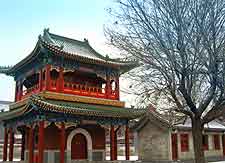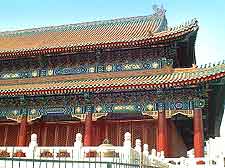Tianjin History Facts and Timeline
(Tianjin, China)

As one of the five National Central Cities of the People's Republic of China, Tianjin enjoys a favoured status. It is China's sixth-largest city and one of the country's hubs of advanced innovation, industry and financial reform.
Divided into a historic old city district and the more modern Binhai New Area, Tianjin and its history offer an interesting mix of ancient China and the economic tiger the world knows today.
A Grand Canal
During the Sui Dynasty, the Grand Canal of China was constructed. This event was significant in the history of Tianjin, as it put the city on the map and pushed it into its role as one of China's main trading centres in the north. The city carried on in a quiet way until centuries later, when it got caught up in the Opium Wars of the mid-1800s.
Foreign Influences
The British and the French captured the Taku forts, located near Tianjin, in 1858. This in turn led to the end of the Second Opium War (1856 to 1860) and the signing of the Treaties of Tianjin, which opened the port to foreign trade. The Emperor of China ratified the treaty in 1860, and soon both the French and the British were setting up concessions here.
At the end of the 1800s, other countries found their way to Tianjin and set up their own little concessions to get a piece of the lucrative Chinese trade. Germans, Russians, Japanese and even Belgians all carved out a piece of the city, and their influence can still be seen in the architecture of certain districts.

The Boxer Rebellion
Things weren't always peaceful between the Chinese and Tianjin's foreign residents. In 1900, the pro-nationalist Boxers took control of the city for several weeks, blocking European forces from reaching
Beijing and all foreign trade in and out of the port. Soon, the Eight-Nation Alliance gained control of Tianjin, governing it until 1902, when it was returned to the more cooperative Qing Dynasty rulers.
During the Qing period in Tianjin history, the city was greatly modernised. The country's first modern police force was established here and in 1907, China saw its first-ever democratic elections for a local council. The Qing kept the city open to foreign powers, both for trade and military presence.
Japanese Disruption
In 1937, the Japanese conquered Tianjin during the Second Sino-Japanese War (1937 to 1945). Surprisingly, the Japanese did not fully occupy the city and continued to let the foreign concessions operate as usual until the early 1940s, when Japan finally took over the US and British concessions.
This takeover created a massive rift in Anglo-Japanese relations, as the British refused to abandon their concession in Tianjin. For a time it looked as if a new war between the West and Japan was about to happen. But the Western powers shifted their focus to other fights and the Japanese ruled the city until 1945, when it lost WWII to the Allies. Since then Tianjin has resumed its role as a global centre of trade and finance between China and the world.
 As one of the five National Central Cities of the People's Republic of China, Tianjin enjoys a favoured status. It is China's sixth-largest city and one of the country's hubs of advanced innovation, industry and financial reform.
As one of the five National Central Cities of the People's Republic of China, Tianjin enjoys a favoured status. It is China's sixth-largest city and one of the country's hubs of advanced innovation, industry and financial reform.